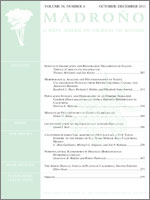CONTENTS (4)
NOTES (1)
NEW SPECIES (2)
BOOK REVIEW (1)
ANNOUNCEMENTS (3)
INDEX (1)
DEDITCATION (1)

No abstract available
No abstract available
No abstract available
No abstract available
No abstract available
No abstract available
No abstract available
